OneOdio Studio Max 1: Two-minute review
According to friends of mine who've tried it, and a quick Google check to see if they know what they’re talking about, the best headphones for DJs (and other kinds of live music performers, by all accounts) are wired ones. Why? Latency – going wireless incurs a lag, and that's just not OK when you're building a set or trying to keep to a beat. But all of this is something OneOdio seems set on challenging with its new Studio Max 1 DJ headphones.
These new wireless cans aren’t aiming for our list of the best wireless headphones, but instead aim to provide musicians with a tempting wireless rival to the current wired hegemony – with the option to go back to wired if you'd like to. So, a sort of best wired headphones hybrid proposition, if you will.
In many ways they work, with a range of useful features and some handy in-box extras that you don’t see in many rivals. However, TechRadar is first and foremost a consumer website and for everyday non-DJ cans – or even people who want an audio solution for work and for play – and the Studio Max 1 don’t cut the mustard I'm afraid.
The primary issue is that the headphones just don’t sound good. Audio is oddly crunchy and with overblown bass that drowns out most everything else, and treble is so weak that even spoken-word audio doesn’t sound great.
The Studio Max 1 are also a little tiresome to set up, with a Bluetooth pairing process that’s a bit confusing and a design that needs some untangling when you use them, despite the lack of cables.
But there’s a lot to like here. OneOdio isn’t just giving you a pair of headphones in the box but several different cables (the cans have multiple ports) as well as a wireless transmitter to give you much further range for Bluetooth. For many users, the inclusion of this transmitter is all that it’ll take to make the Studio Max a must-buy; cutting the cable gives DJs a lot more freedom anyway, and the transmitter gives you even longer range.
A further potential downside of wireless over wired DJ headphones is that they need recharging, unlike wired ones. However OneOdio has given the Studio Max 1 such a big battery life that it lasts a whopping 120 hours between charges, a figure so high that it dwarfs even its longest-lasting rivals. Honestly, if battery life is important to you and you’re not a DJ, it still might make these cans a great buy.
These fantastic features aren’t quite enough to offset the poor audio quality in terms of my star rating for this review, but they'll definitely give some buyers a reason to ignore my rating and pick up the OneOdio Studio Max 1 anyway.
OneOdio Studio Max 1 review: Price and release date
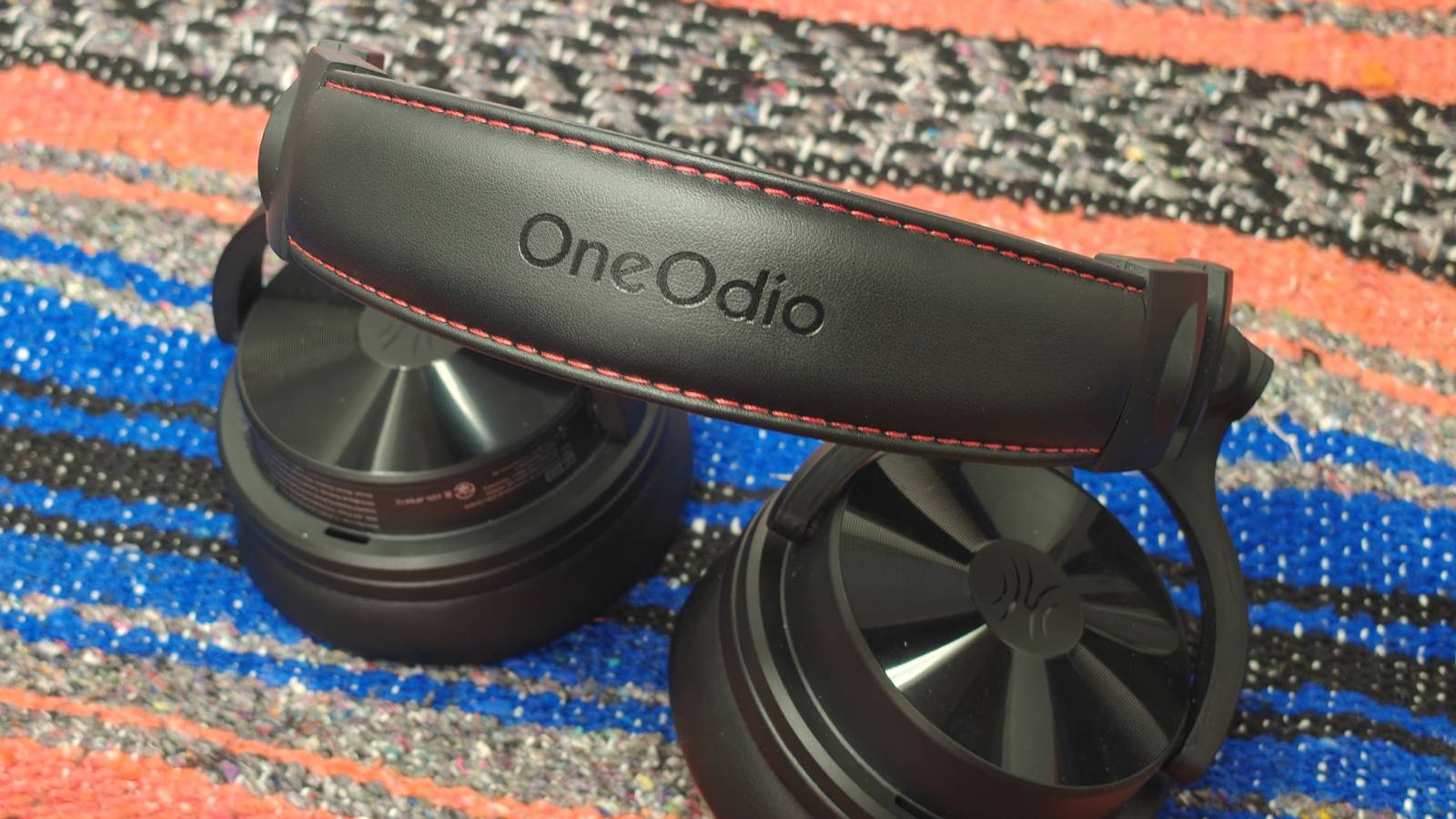
- Released in February 2025
- Sell for $169.99 / £135 / AU$275
The OneOdio Studio Max 1 were announced in December 2024, and were released a few months later in February 2025.
You can pick up the headphones for $169.99 / £135 / AU$275, which is a little north of some of our favorite Bluetooth headphones but a reasonable price when you consider what comes in the box: there’s a carry bag, a USB-C to USB-C charging cable, 3.5mm-3.5mm audio cable, 3.5mm-6.35mm audio cable, 6.35mm audio adaptor and special Bluetooth transmitter. Yes, it's all included in that upfront cost.
The world of wireless DJ headphones features few competitors so far, and OneOdio’s offering is relatively affordable compared to, say, the AIAIAI TMA-2 which costs $300 / £250 (roughly AU$500). Of course, DJs or musicians can also find many worthy offerings by heading over to our list of the best headphones, but they won’t all have the full range of jacks and features.
Here's the thing: for accessories and functionality, there's value here. The problem is, headphones need to sound good first and foremost – ideally to anyone who listens, whether pro mixer or dedicated music lover. And as we'll see, that's the main issue with the OneOdio Studio Max: I don't think they'll appeal to either listener.
OneOdio Studio Max 1 review: Specs
Swipe to scroll horizontally
Drivers | 50mm |
Active noise cancellation | No |
Battery life | 120 hours |
Weight | 350g |
Connectivity | Bluetooth 5.3 |
Waterproofing | NA |
OneOdio Studio Max 1 review: Features
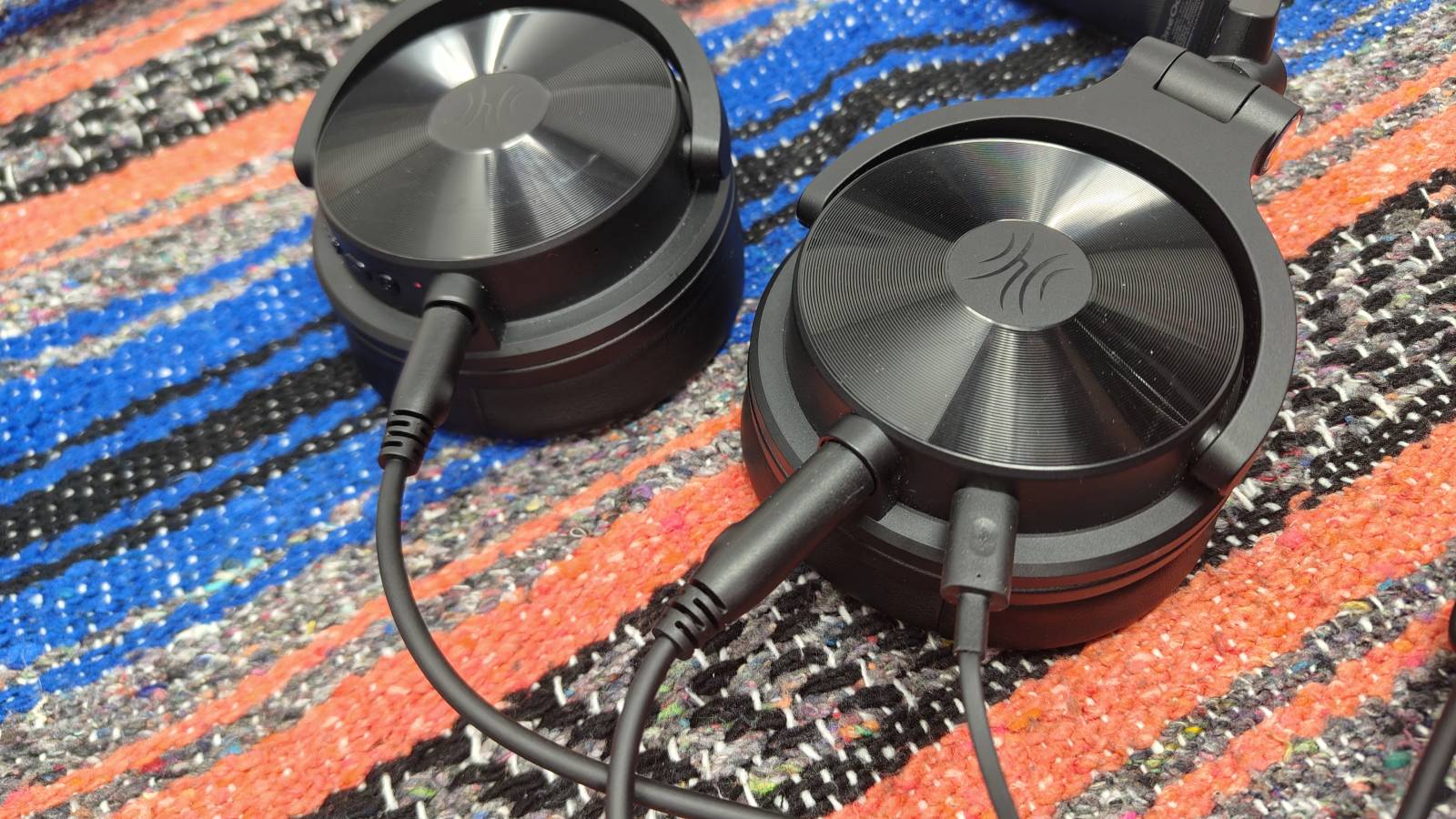
- Impressive 120-hour battery life
- Myriad connectivity options
- No ANC or app (but that's not really the point)
Let’s start with the OneOdio Studio Max 1’s best feature: its battery life. Stamina here stretches to a whopping 5 days of listening time. That’s right, days and not hours – OneOdio puts the figure at 120 hours.
That’s by far one of the longest battery lives you’ll find on wireless headphones, making this a fantastic pick for all kinds of users who may be unavailable to charge (or to remember to charge) their headphones regularly.
Certainly helping that battery life, but not helping all listeners, is the lack of any kind of noise cancellation in the Studio Max 1 (beyond the natural damping and passive isolating effect of the ear pads).
Given that you may want to use the DJ headphones in, say, busy music-filled halls where you’d want to cut away audience and reverb and projected music to hear just your turntables, it feels an odd choice in 2025 – although it's true that traditional DJ cans don't come bearing ANC. The thing is, it also makes these headphones a little less appealing for everyday listeners, although again, hybrid users will likely look to all the other things they can do that others can't.
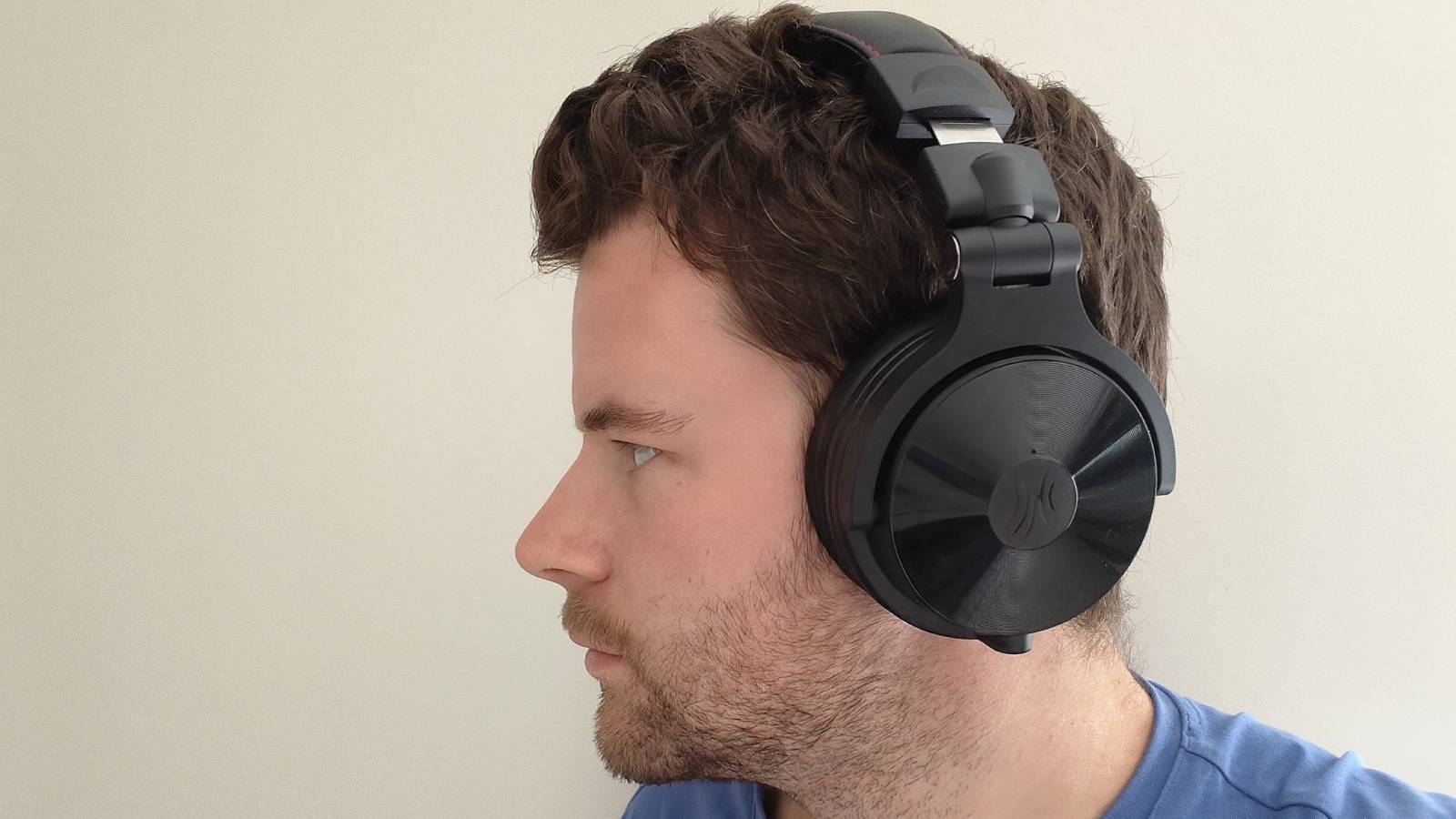
So back to the Studio Max’s unique features, then: in the box OneOdio has included something called the Transmitter M1. You plug this into your musical instrument or DJ deck to greatly extend the Bluetooth connection range, and I can see this being useful in many a professional or casual situation. It also lets you plug into devices that don’t have on-board Bluetooth like guitar pedals, certain DJ decks and, very usefully for me, custom-build PCs which don’t have Bluetooth adaptors.
Also helping connectivity is a feature which OneOdio calls Rapid WiLL+, and it’s basically an improved latency for everyday Bluetooth connection. That’s not its only connection option though as the headphones, as mentioned, have a 3.5mm and 6.25mm jack as well as in-box cables to use them. There are a plethora of connection options available, making these really adaptable headphones.
Bluetooth users beware though: I found the Studio Max hair-pullingly annoying to set up via the standard in the first instance, due to (as I found out later) the headphones defaulting to pairing in a different mode. I never normally say this, but you’ll need to keep two eyes on the in-box instruction manual to make sure you set this up properly.
If you’re using your Studio Max 1 alongside a smartphone or tablet, you might miss the lack of a companion app and any of the features it might bring (an equalizer, touch control customization, visual indicator of battery life, etc). Almost all the features of these headphones boast are musician-friendly ones, and although notable and niche, the Studio Max 1 do therefore lack certain perks mere mortals may have become used to – and I do mean those you'd find in an app.
- Features score: 4/5
OneOdio Studio Max 1 review: Design

- Bulky body
- Many ports
- Many more buttons
The Studio Max 1 are rather large 'I'm the DJ' headphones – as far as I can recall, they’re the first headphones I’ve ever tested which I could see in my peripheral when worn normally. So don’t expect svelte little things, these are industrial-strength and industrial-sized.
The Studio Max 1 are big over-ear headphones with a padded headband and thick padded cups that tip the scales at 350g. Something I grew to really appreciate about them is how moveable they are, making them easy to fold for a bag, fit on different heads or listen with just one ear pressed against the corresponding driver: each cup rotates across 90-degrees inward to fold as well as 180 degrees on the x-axis and almost a full 360 degrees of tilt.
This did get a little confusing sometimes when I wanted to quickly listen to music, yet had to spend ages fiddling about and rotating cups, but I’m still in support of it.
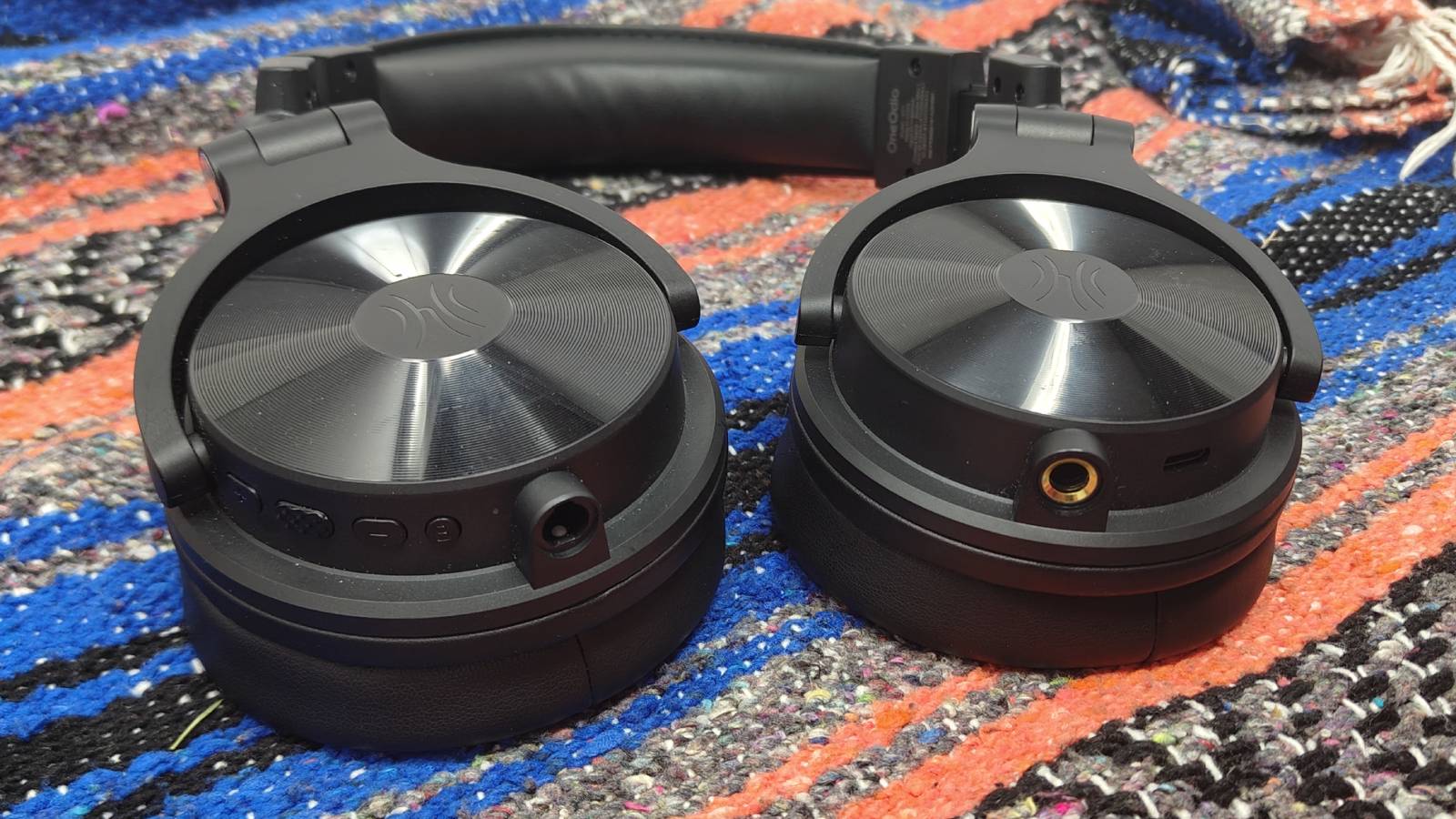
The OneOdio take quite a lot of getting used to, and that’s because of how many different ports and buttons the headphones have. On the left cup you’ve got the USB-C charging port and the 6.25mm jack – so far, so simple. However, on the right side we’ve got the 3.5mm jack as well as a volume up button, a power button, a volume down button and another icon which simply says ‘B’ that I constantly forgot the function for (it’s for changing pairing modes).
When listening to music, I’d find it impossibly hard to feel out which of these little plastic stumps was for volume, and I quickly decided to stick to my input device’s volume buttons instead.
I couldn’t find an IP rating for the Studio Max 1 – they’re not exactly streamlined enough for swimming, but it’s something to bear in mind if you’re DJing at, say, a pool party or foam party (in case you take a time machine back to the 90s).
- Design score: 3/5
OneOdio Studio Max 1 review: Sound quality
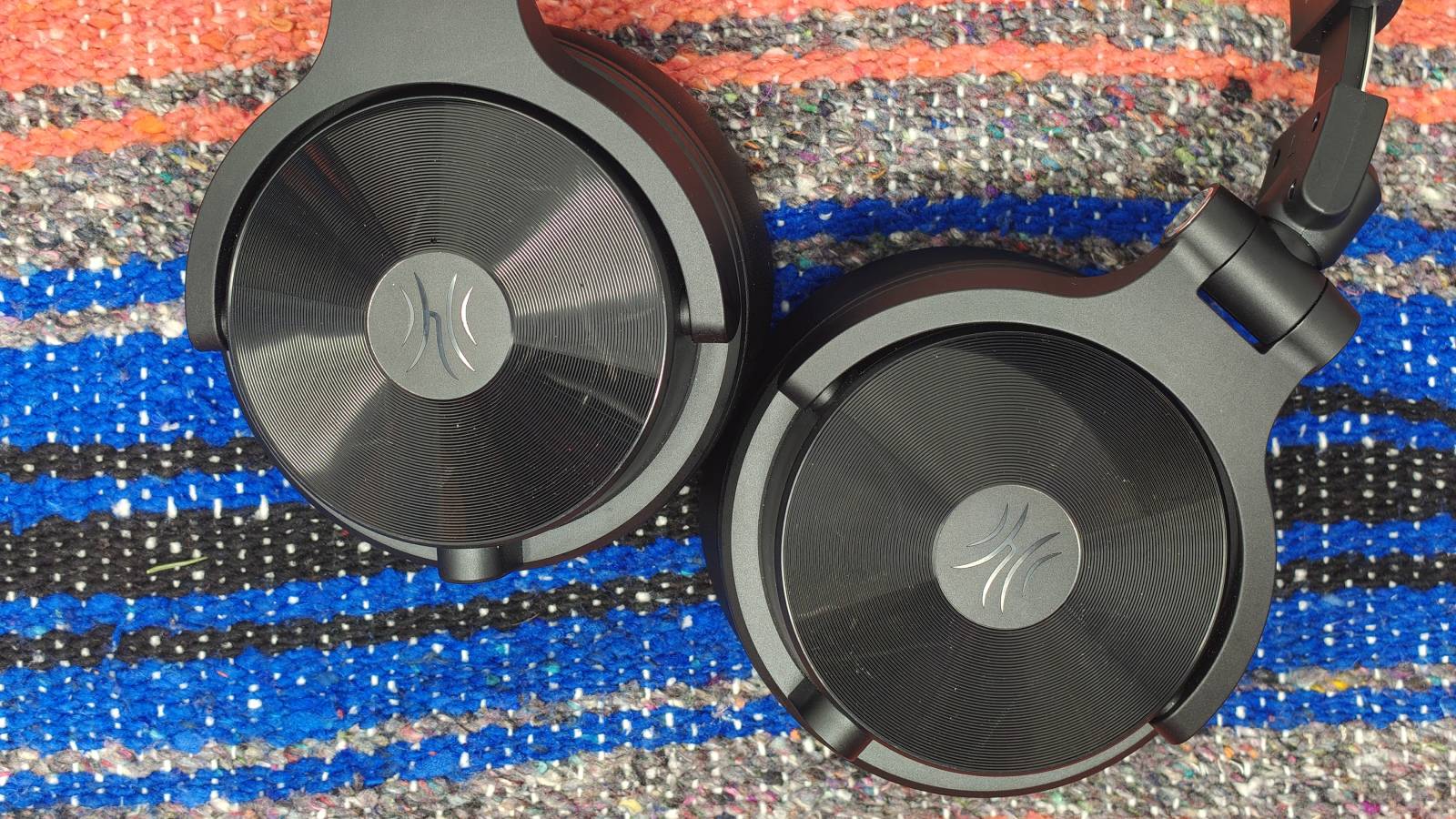
- Tinny-sounding audio
- Overwhelming bass
- One issue better, one worse with wired audio
Given the range of features and the target audience of live musicians on a budget, you can begin to understand that perhaps connectivity was key and music quality wasn’t the most important aspect when delivering the OneOdio Studio Max 1 to meet a brief. I need to say that to get you in a forgiving mood, because these headphones don’t sound great.
The one thing going for the Studio Max 1 is a meaty amount of bass, so if that’s all you care about, then you might find the headphones acceptable. But it’s an indistinct and crunchy one-note kind of bass, so while you can feel your head shake, it’s hard to make out the actual strumming of a bass guitar or timbre of lower-register instruments.

I also struggled to enjoy vocals and other treble lines when they were barely audible behind the bass, a problem that also affects mid-register instruments and… well, anything that isn’t bass, really. Boy, did I wish that OneOdio had given these things some kind of equalizer I could use to reduce bass!
Another issue with the sound quality was simply that music sounds a little tinny, most notably in the usual suspects like drum hi-hats and rhythmic guitar riffs but apparent, per song, in everything from vocals to classical instruments. I say “a little” to indicate that it’s not as bad as in, say, cheapie $30 headphones, but it’s more than I’ve come to expect at this price.
It's worth noting that I did most of my testing in Bluetooth mode. When I connected the headphones via wires, the bass problem was noticeably diminished. However, the audio was inexplicably even crunchier across the frequencies, which put me off using cables.
- Sound quality: 2.5/5
OneOdio Studio Max 1 review: value
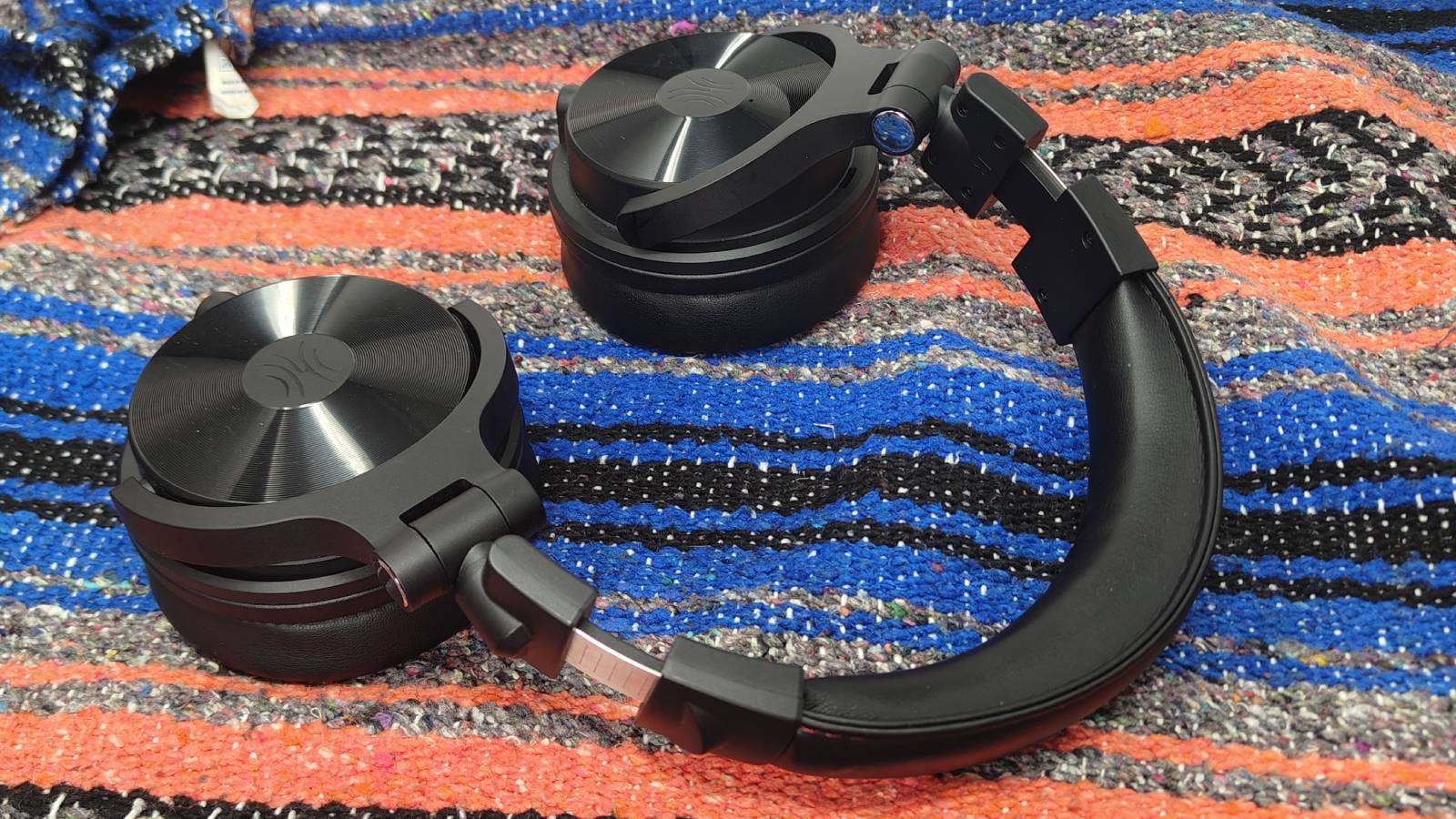
On their own, the OneOdio Studio Max 1 don’t quite justify their price, with the iffy audio quality making other headphones much more tempting.
However, OneOdio tilts the balance in its favor with all the in-box extras: the multiple cables, transmitter and carry bag and just their imposing size and meatiness all help the headphones to justify their cost.
- Value: 3.5/5
Should I buy the OneOdio Studio Max 1?
Swipe to scroll horizontally
Features | The long-lasting battery and useful transmitter help us forget a few other niggles | 4/5 |
Design | They're really bulky, but with lots of ports, and they're easy to fold. | 3/5 |
Sound quality | The audio doesn't cut the mustard for listeners. though for performers it might be fine. | 2.5/5 |
Value | The in-box accoutrements help sway the value proposition for these budget headphones. | 3.5/5 |
Buy them if…
You often struggle with Bluetooth range
If you're often wandering outside the Bluetooth range of your headphones, whether it's for specific use cases or you're just a pacer, the in-box transmitter with the Studio Max will stop your songs sounding patchy.
You have the worst memory for charging
Reliably forget to charge your gadgets for weeks at a time? The 120-hour battery life of these headphones means you don't need to.
Don’t buy them if…
You care about audio first and foremost
Audio isn't the most important aspect of headphones for everyone, but if it is for you, then the Studio Max 1 won't impress you very much.
You want lightweight headphones
There's no denying that the OneOdios are some pretty hefty headphones, and they won't win you fashion points.
OneOdio Studio Max 1 review: Also consider
Swipe to scroll horizontally
Drivers | 50mm | 40mm | 50mm |
Active noise cancellation | No | No | No |
Battery life | 120 hours | 40 hours | 110 hours |
Weight | 350g | 217g | 310g |
Connectivity | Bluetooth 5.3 | Bluetooth 5.3 | Bluetooth 5.0 |
Waterproofing | NA | NA | NA |
OneOdio Studio Wireless C
These alternative headphones to the Studio Max from OneOdio have many similar features, including a very long battery life and 50mm driver, but without any of the DJ trappings. Oh, and they're much cheaper…
AIAIAI TMA-2 Wireless
If you want DJ headphones, the AIAIAI options here are much more lightweight options. The battery life isn't comparable but they also come with a wireless transmitter. (Our AIAIAI TMA-2 experiential is incoming, but until then, you can read more about the older TMA Studio Wireless+).
How I tested the OneOdio Studio Max 1
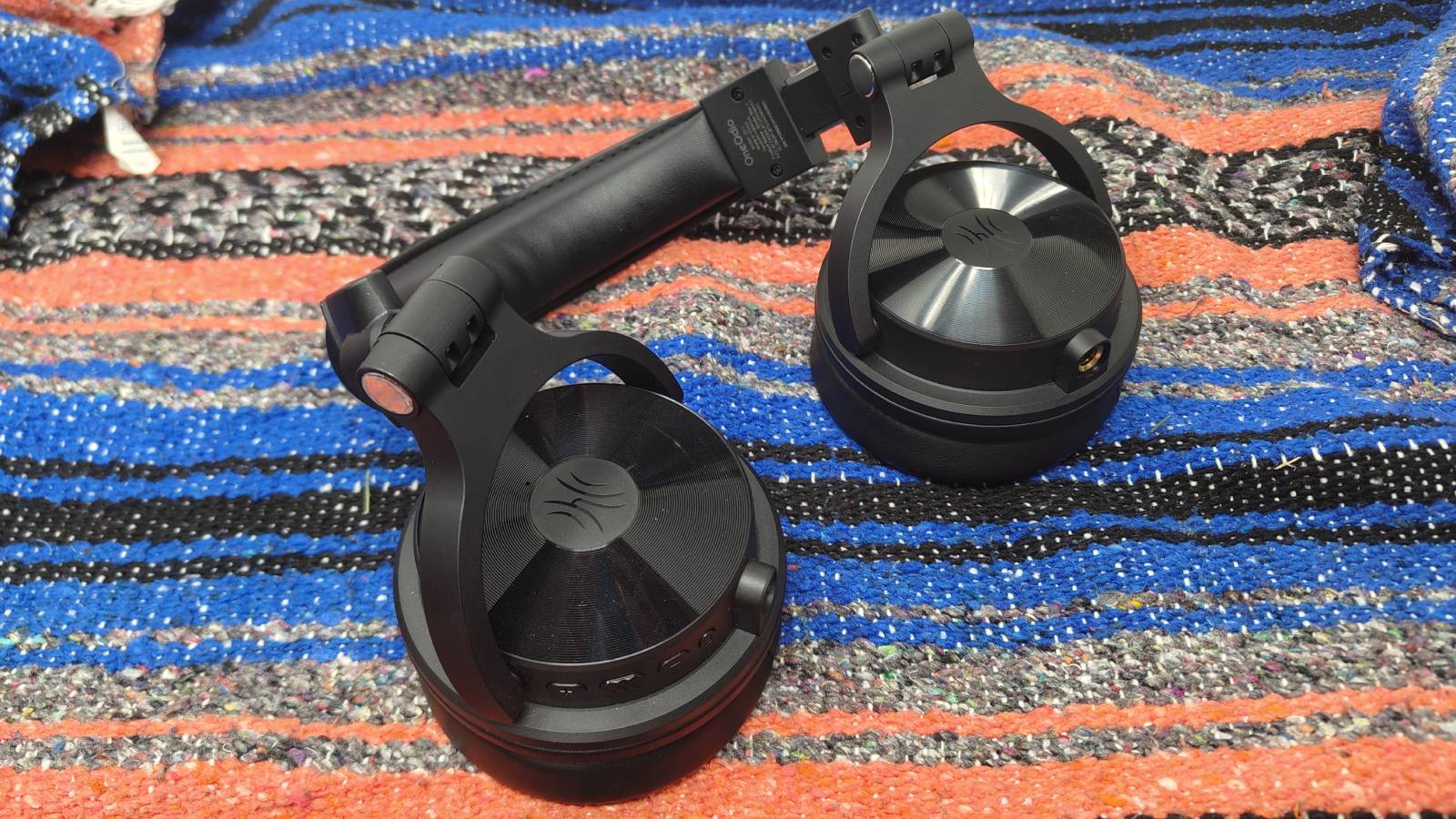
- Tested for two weeks
- Tested with smartphone, computer and keyboard
I tested the OneOdio Studio Max 1 for two weeks before writing this review. For the most part I used them alongside my Android smartphone via Bluetooth but I also used them alongside my PC and plugged into a digital keyboard at several times too.
I listened to music and audiobooks with the headphones, both at home and about, and also watched a movie and several hours of TV with them at home. The keyboard I used them with was a cheapie one, and this part of the testing was largely to appreciate the versatility that the in-box wires provides.
I've been testing gadgets at TechRadar for six years, so have a wealth of knowledge to draw on for this review. I've been playing the keyboard for about 20, but that didn't help out here too much.
- First reviewed in April 2025





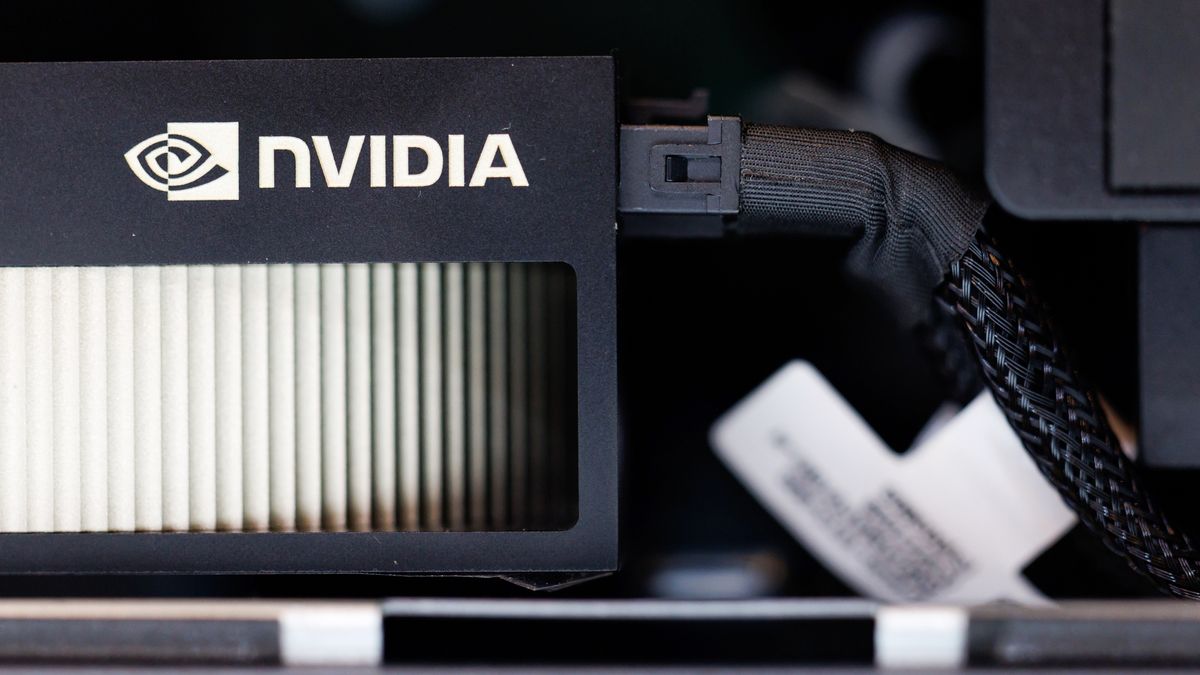




 English (US) ·
English (US) ·